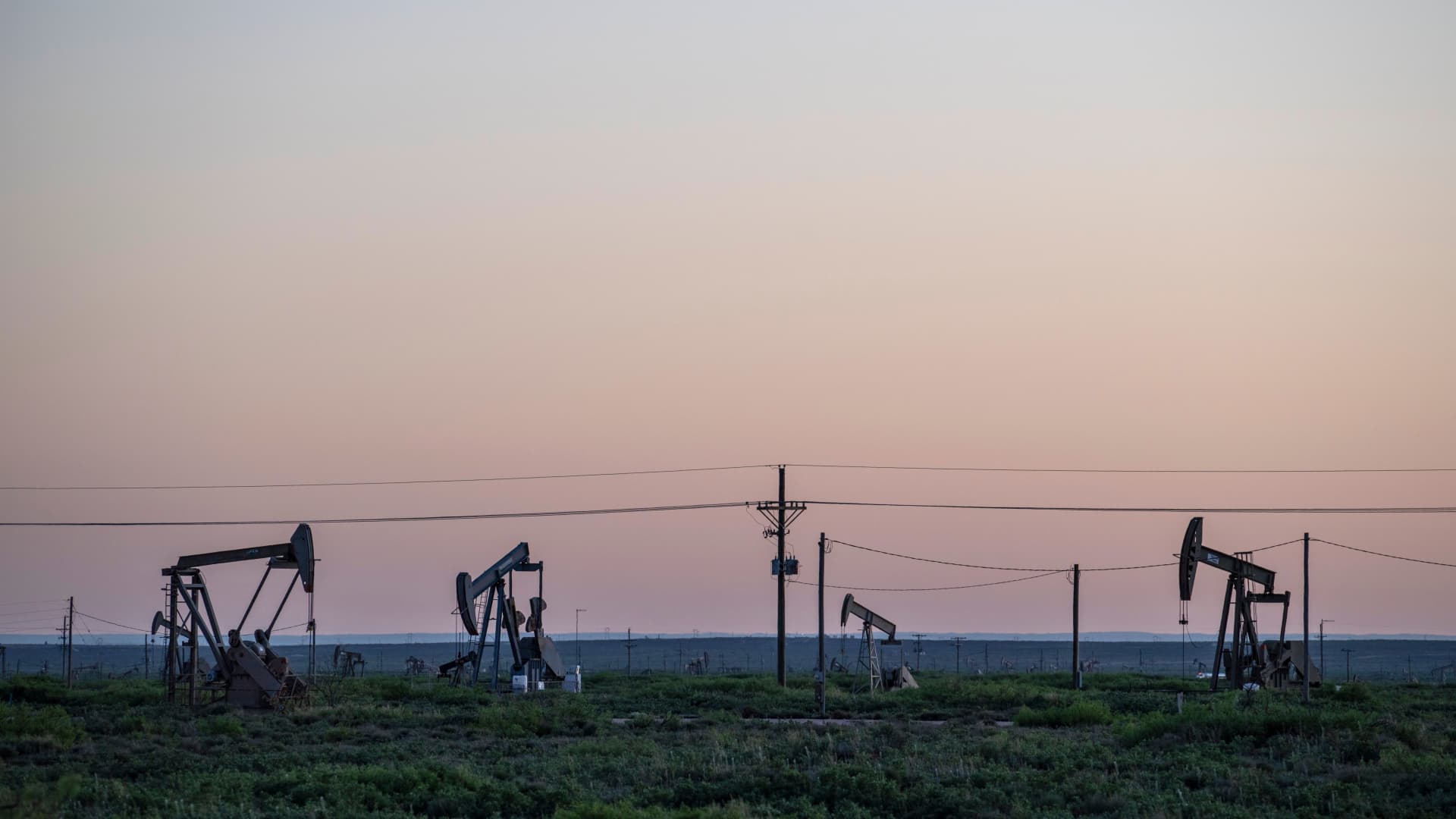
Energy has been a bright spot in an ugly year for the stock market overall. And despite rising share prices, we believe there’s still plenty of upside for the sector — including the oil and gas names in our portfolio. Oil stocks are on a tear. The S & P 500 energy sector is up nearly 59% year to date, compared to a decline of 14% for the broad stock index. The huge move has come as oil prices surged. U.S. benchmark West Texas Intermediate crude is up about 60% this year. International benchmark Brent crude is up slightly more than that. During that period, we’ve added a number of energy stocks — Devon Energy (DVN), Halliburton Company (HAL), Pioneer Natural Resources (PXD) and Coterra Energy (CTRA) — to the Charitable Trust portfolio alongside Chevron, which we already owned coming into 2022. And continue to like them at higher prices. “We are overweighted in energy, and we are going to reiterate that it’s good to be overweight in energy,” Jim Cramer said on Tuesday’s “Morning Meeting.” What’s new A number of recent developments have bolstered our view that oil prices are likely to stay elevated in the near-to-medium term. These include the easing of strict Covid lockdowns in the world’s second largest economy, China, specifically in Shanghai, the largest city in the world. European Union leaders also agreed to their harshest set of sanctions on Russian oil yet. Based on a deal agreed to in principle late Monday, the EU intends to ban 90% of Russian oil imports into the bloc by the end of the year. The impact of those situations are already being felt, as crude futures traded higher for much of Tuesday; they gave up a large chunk of those gains after a Wall Street Journal report on Russia’s involvement in an OPEC oil-production deal . Earlier Tuesday, here’s what Goldman Sachs’ commodities chief, Jeff Currie, told CNBC about his outlook on crude prices: The key message here is this market was extraordinarily tight before the Russian invasion of Ukraine. Now, with these embargoes on top of it, the upside risk is significant. Our target is $125, but when we look at where [refined] product prices are trading, it’s the equivalent of $140 already. Just closing the gap between product and crude gets you up to somewhere around $140, so the upside risk around our $125 target is enormous. There’s the saying that the cure to high prices is higher prices because at a certain point, demand for a particular commodity — in this case, oil — will become severely hampered. It’s hard to know where that level for “demand destruction” may be for oil, given it plays such a key role in the economy. In Currie’s mind, we’re not there yet because politicians across the world have implemented policies designed to offset the impact of rising energy costs: “Every government around the world is stepping up to protect their consumers, which means the price at which you get that demand destruction is going to be substantially higher from here.” How to invest Russia’s invasion of Ukraine in late February helped accelerate the rise of oil prices, but the mismatch between supply and demand coming out of Covid pandemic already was there. “Oil will continue to go up. I think a lot of people are saying, ‘Listen, I don’t want to buy the stocks because if the war in Ukraine ends, then what happens to oil and gas?’ I think that’s totally wrong,” Cramer said. “This is China demand, U.S. demand and European demand, and because of Russia. But most importantly, we’re not pumping what we should.” That’s the foundational reason for higher crude prices, and it’s good news for the pure-play exploration and production firms in our portfolio like Pioneer and Devon, which have breakeven prices somewhere in the range of $30 to $40 per barrel. They’ve maintained capital discipline while generating tons of excess cash flow, which the companies return to shareholders via dividends. Both Pioneer and Devon have adopted variable dividend policies, creating possibilities for higher quarterly payouts if crude continues rising. “We’re 10% in oil and gas. I would love to get up to 12%” weighting in the Charitable Trust, Cramer said, noting he thinks Pioneer is the cheapest of the bunch right now. Pioneer shares sell 9.3 times forward earnings estimates, according to FactSet, and we have a 1 rating on the stock, meaning we’d be buyers here. The Club also has a 1 rating on Devon, Halliburton and Coterra, which is our way to play rising natural gas prices. We have a 2 rating on Chevron, which means we’d be buyers on a pullback. Our energy stocks haven’t been on a straight line up this year. There have been moments where they’ve temporarily retreated, and Cramer said that so far, those moments have represented opportunities to buy. “They’re not done,” he said. (Jim Cramer’s Charitable Trust is long PXD, DVN CVX, HAL and CTRA. See here for a full list of the stocks.) As a subscriber to the CNBC Investing Club with Jim Cramer, you will receive a trade alert before Jim makes a trade. Jim waits 45 minutes after sending a trade alert before buying or selling a stock in his charitable trust’s portfolio. If Jim has talked about a stock on CNBC TV, he waits 72 hours after issuing the trade alert before executing the trade. THE ABOVE INVESTING CLUB INFORMATION IS SUBJECT TO OUR TERMS AND CONDITIONS AND PRIVACY POLICY , TOGETHER WITH OUR DISCLAIMER . NO FIDUCIARY OBLIGATION OR DUTY EXISTS, OR IS CREATED, BY VIRTUE OF YOUR RECEIPT OF ANY INFORMATION PROVIDED IN CONNECTION WITH THE INVESTING CLUB. NO SPECIFIC OUTCOME OR PROFIT IS GUARANTEED.




